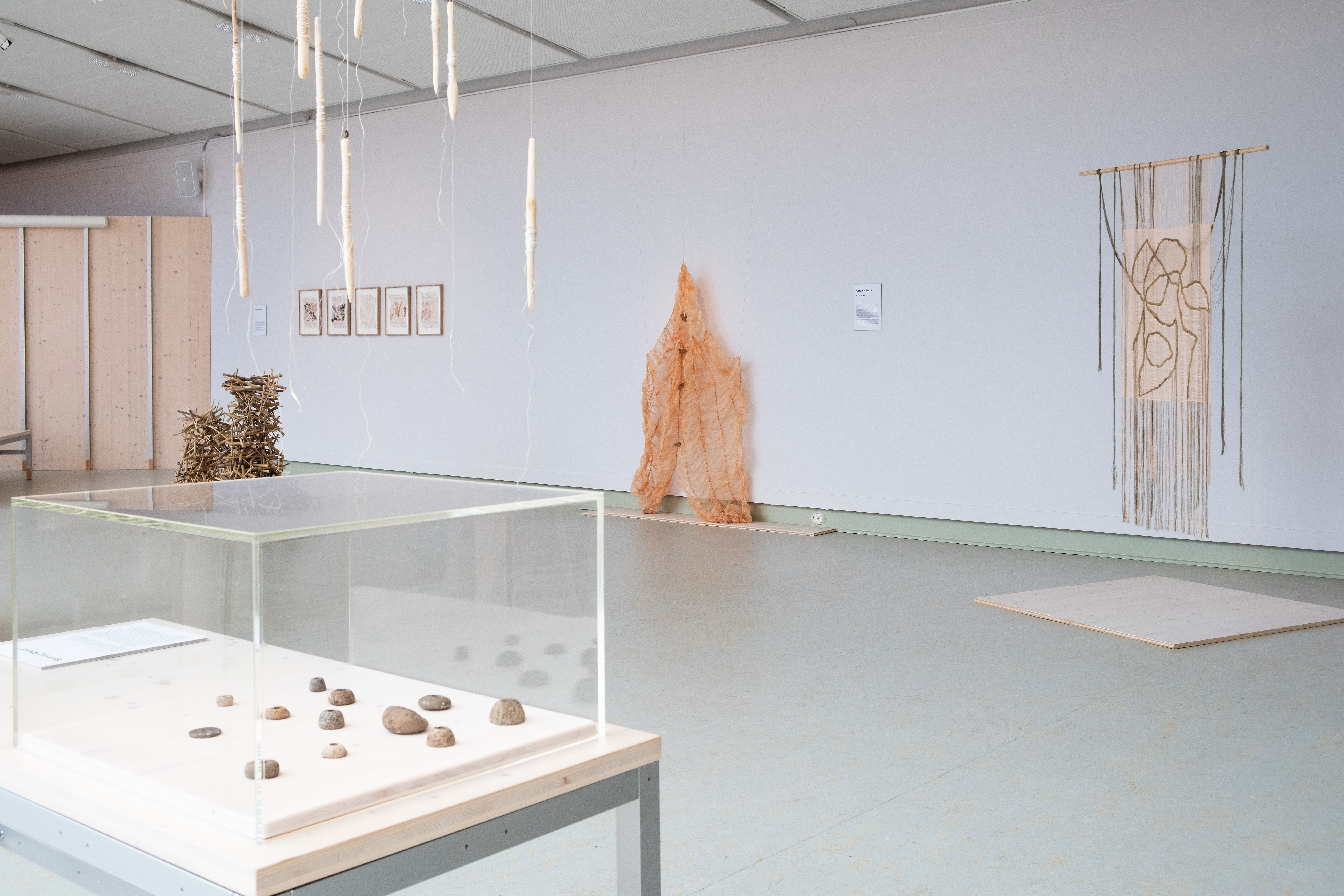
Morus + Röhsska
2025
Morus is an international silk community, practicing home-sericulture - meaning the breeding of silk worms in a small scale in one’s home - in order to engage local communities in historical processes regarding future silk production. The aim of the project is to raise awareness of the intertwined relationships between silkworms, mulberry trees and humans, as well as to ask questions about these relationships from artistic, social, ecological and ethical perspectives.
The Morus exhibition in Super-Ö in Röhsska Museum presents artworks and research by seven members of the community with backgrounds in Greece, France, Germany, Denmark and Sweden. During the first weekend of the exhibition, a Silk Symposium takes place, offering a rich program of presentations, readings, workshops and film screenings to create a meeting place around the theme of home-sericulture. The room is filled with stories from women in silk processes – industrial, private, ceremonial, mythological – in the past, today and for the future.
The Morus Silk Symposium and exhibition in Röhsska Museum, celebrates home-sericulture through the work of Giulia Zanvit, Anna Karlström, Maja Lund, Deborah Jeromin, Hanna Norrna, Irini Gonou and Kleopatra Tsali.
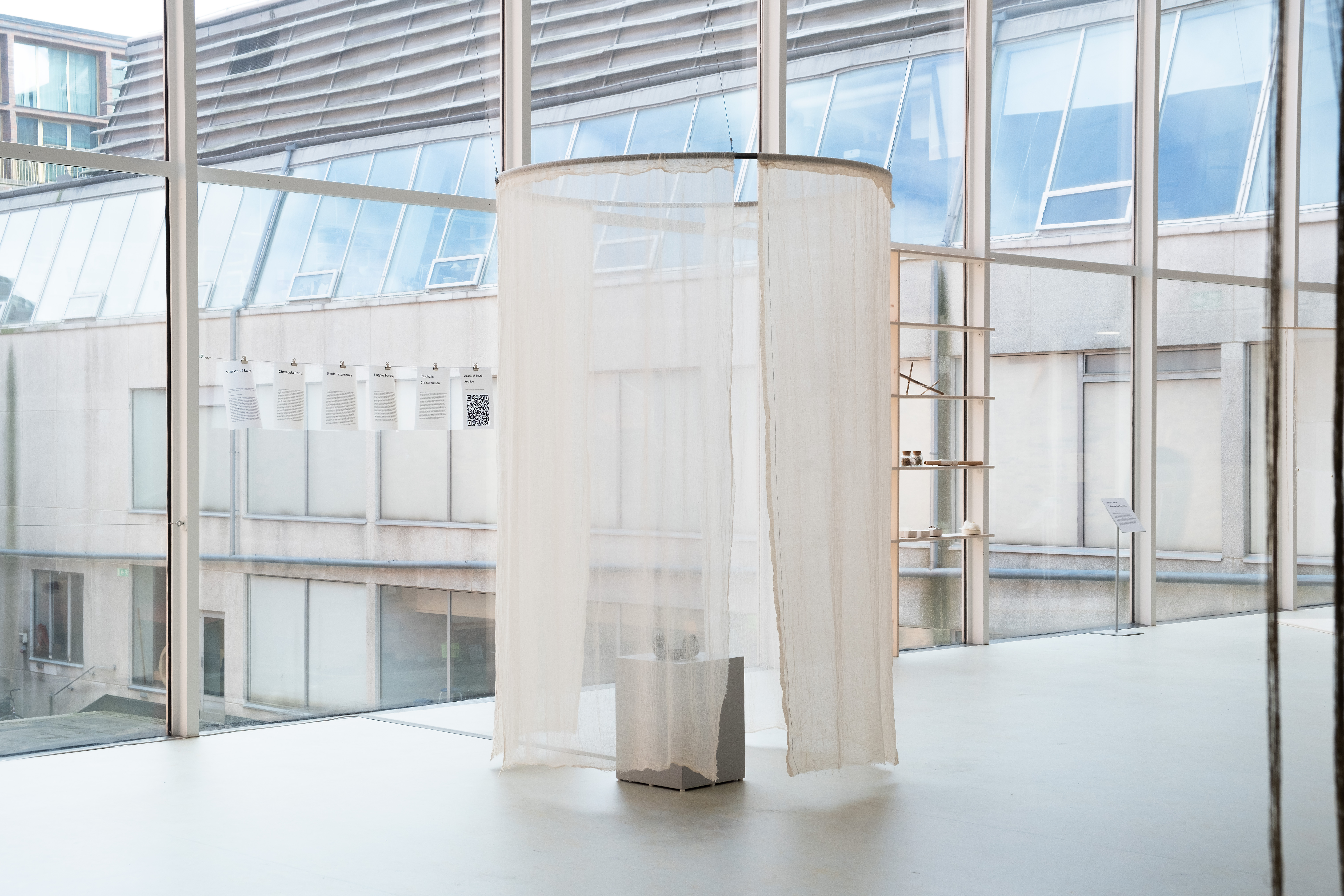 Voices of Souli 2025
Voices of Souli 2025Home-sericulture, as practiced in the Morus Project, is the art of rearing silkworms and producing silk within a domestic or studio setting, using traditional, hands-on methods. Adapting this practice to an urban environment requires the presence of one or more mulberry trees, which leaves are the essential food source for the bombyx mori species. The process involves the careful collection of leaves, attentive care of the silkworms throughout their life cycle and the harvesting of silk cocoons.
Rooted in the essential relationship between silkworms, mulberry trees, and human care, the project promotes a sustainable, locally grounded approach to craft making. By adapting sericulture to home or studio settings, Morus engages a network of international participants who document their parallel experiences through a shared diary, while also developing individual artistic inquiries into ecological, social, and ethical dimensions of silk. Through this collective and multidisciplinary approach, the project aims to raise awareness of the interdependence between species and to question how we might imagine future forms of material culture and coexistence.
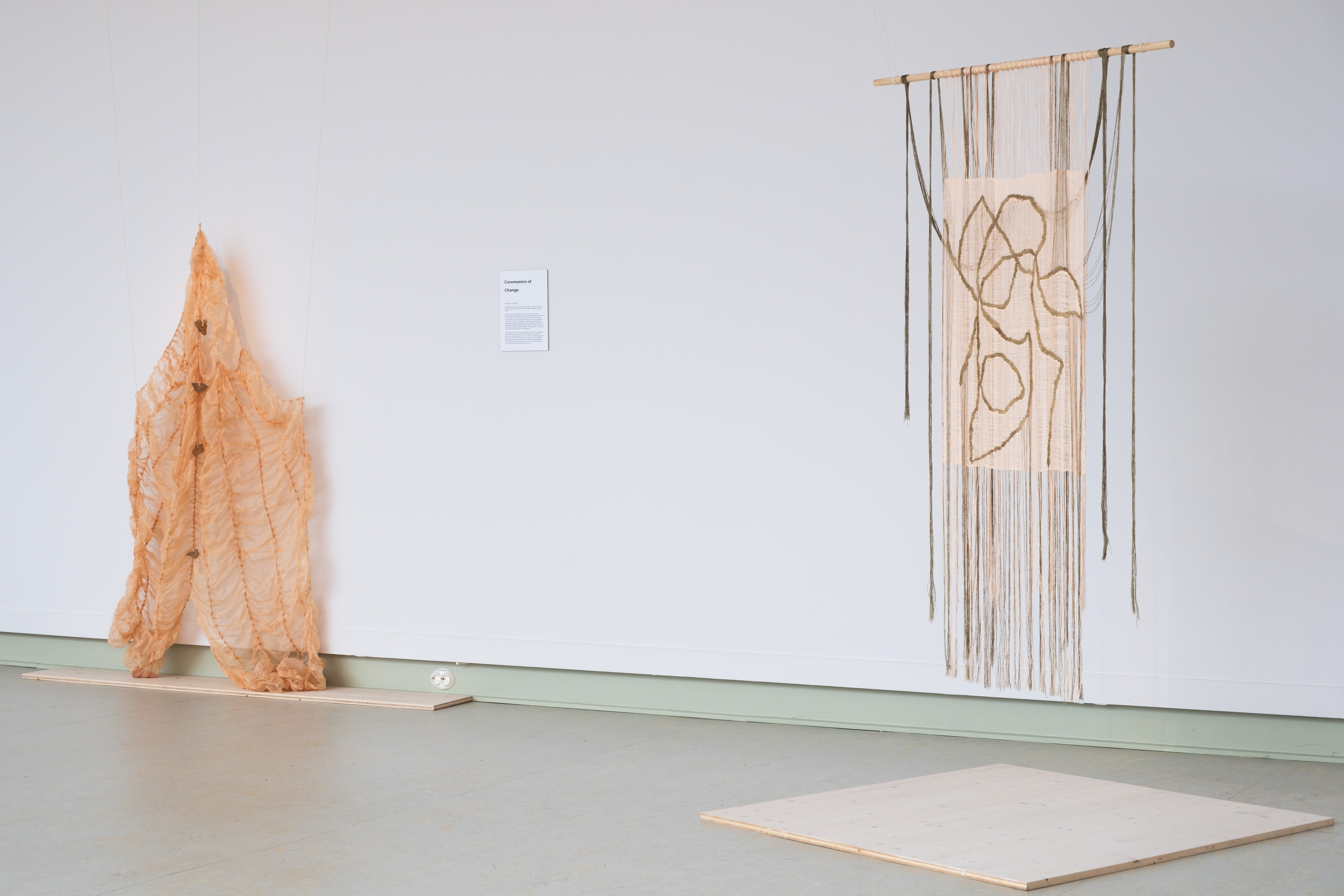 Ceremonies of Change (Kleopatra Tsali 2025), Ingeborg (Hanna Norrna 2025)
Ceremonies of Change (Kleopatra Tsali 2025), Ingeborg (Hanna Norrna 2025)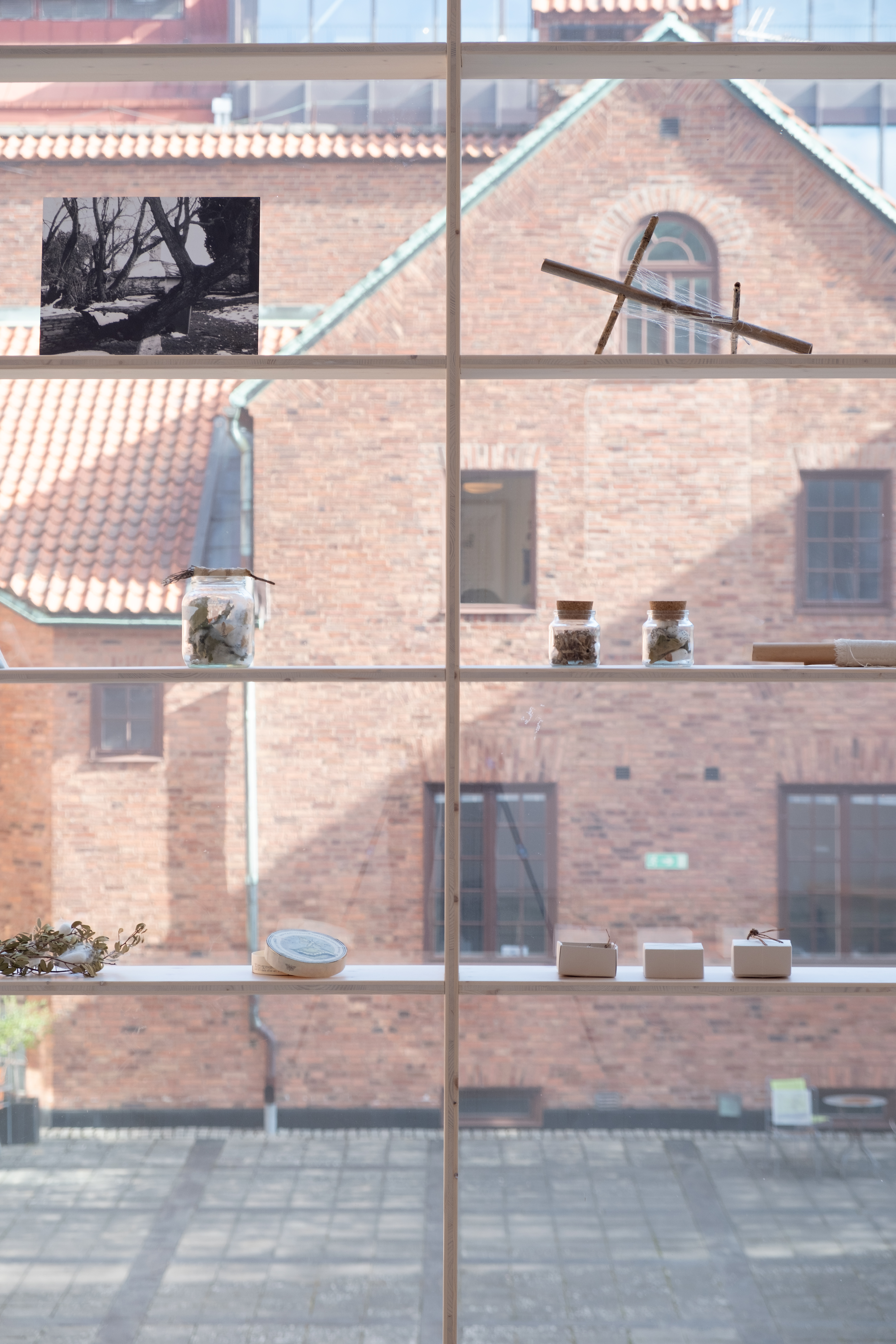 Tools
ToolsVideo stills from Deborah Jeromin’s video Twisted BIOS
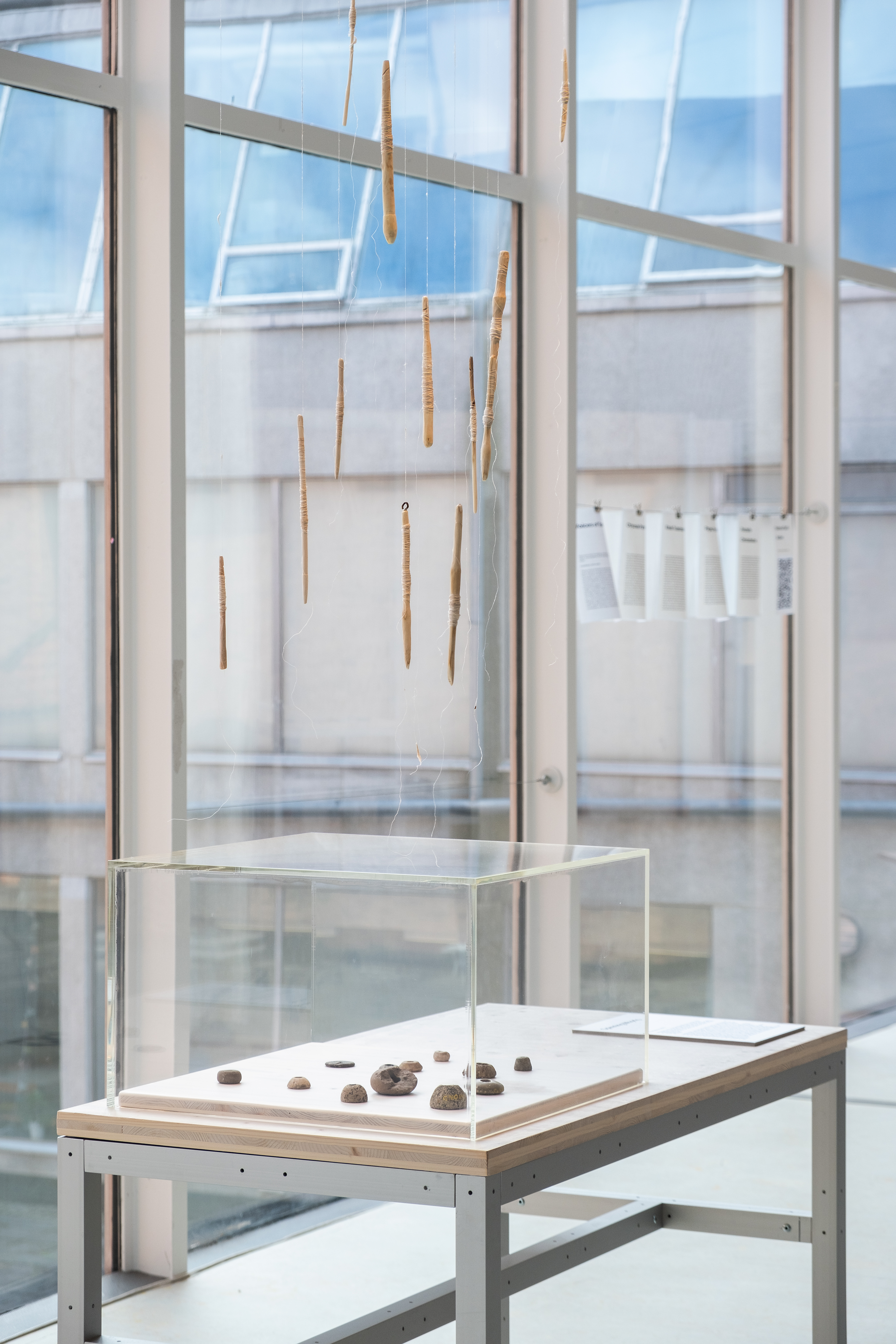 Spinning whorls (Anna Karlström 2025)
Spinning whorls (Anna Karlström 2025)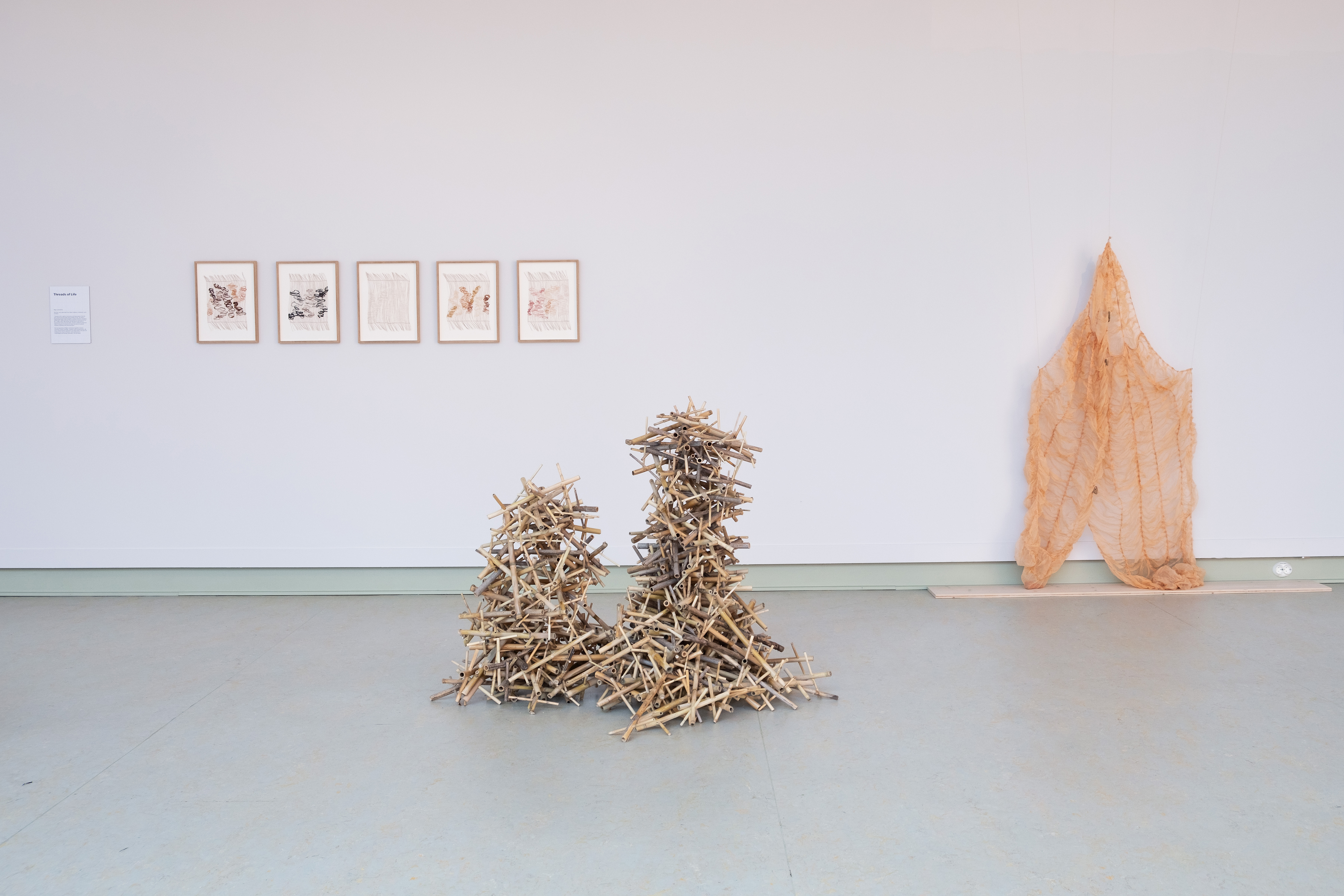 Threads of Life (Maja Lund 2025),
Like a game, building a world to live in, like a
game (Giulia Zanvit 2025), Ceremonies of Change (Kleopatra Tsali 2025)
Threads of Life (Maja Lund 2025),
Like a game, building a world to live in, like a
game (Giulia Zanvit 2025), Ceremonies of Change (Kleopatra Tsali 2025)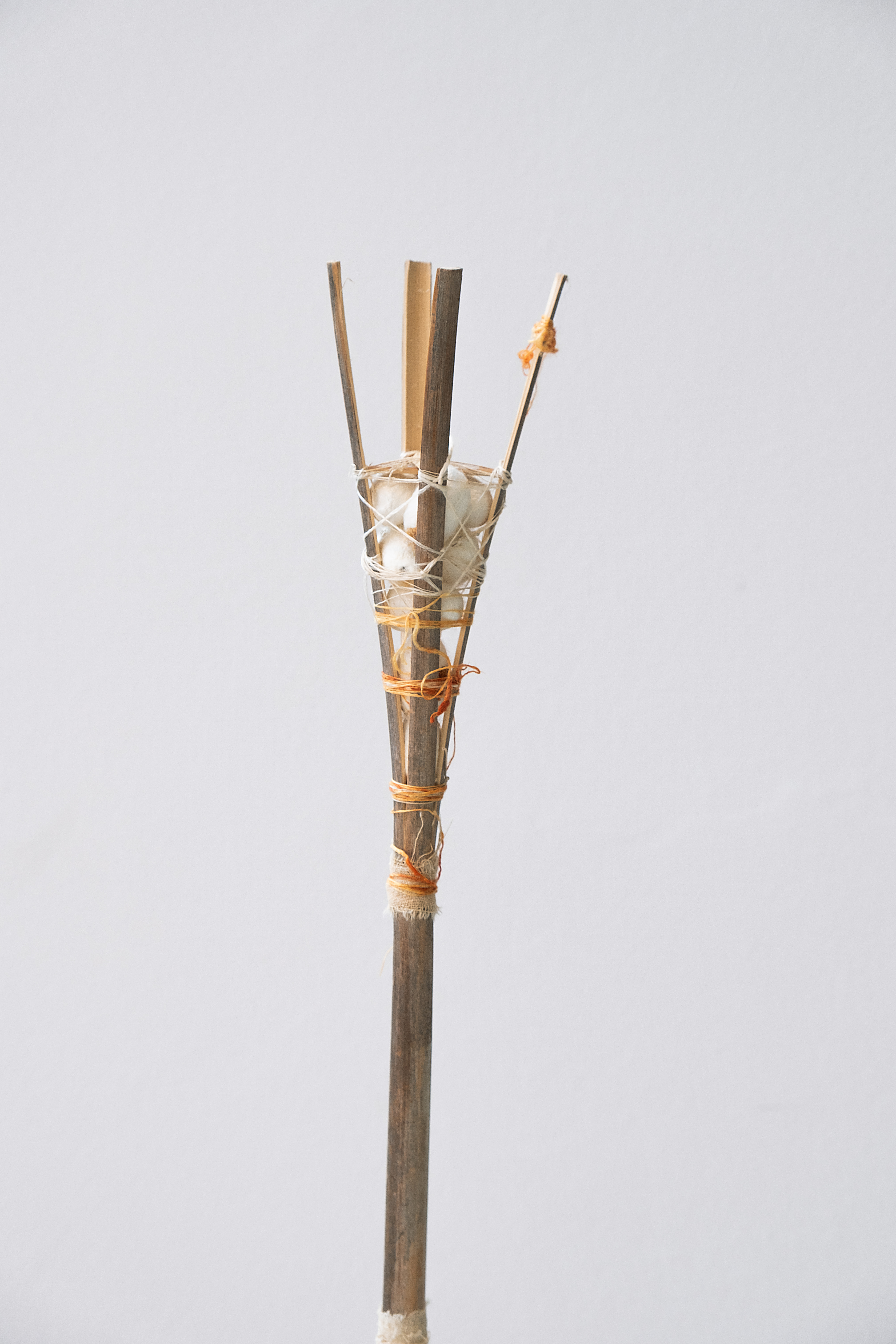
Ritual Cloth, Talismanic Threads (Irini Gonou 2025)
The symposium and exhibition was realised through generous support from Kulturrådet, Göteborgs Slöjdförening and Wilhelmina von Hallwyls Gotlandsfond and Röhsska Museum of Design and Craft
Photo: Hanna Antonsson